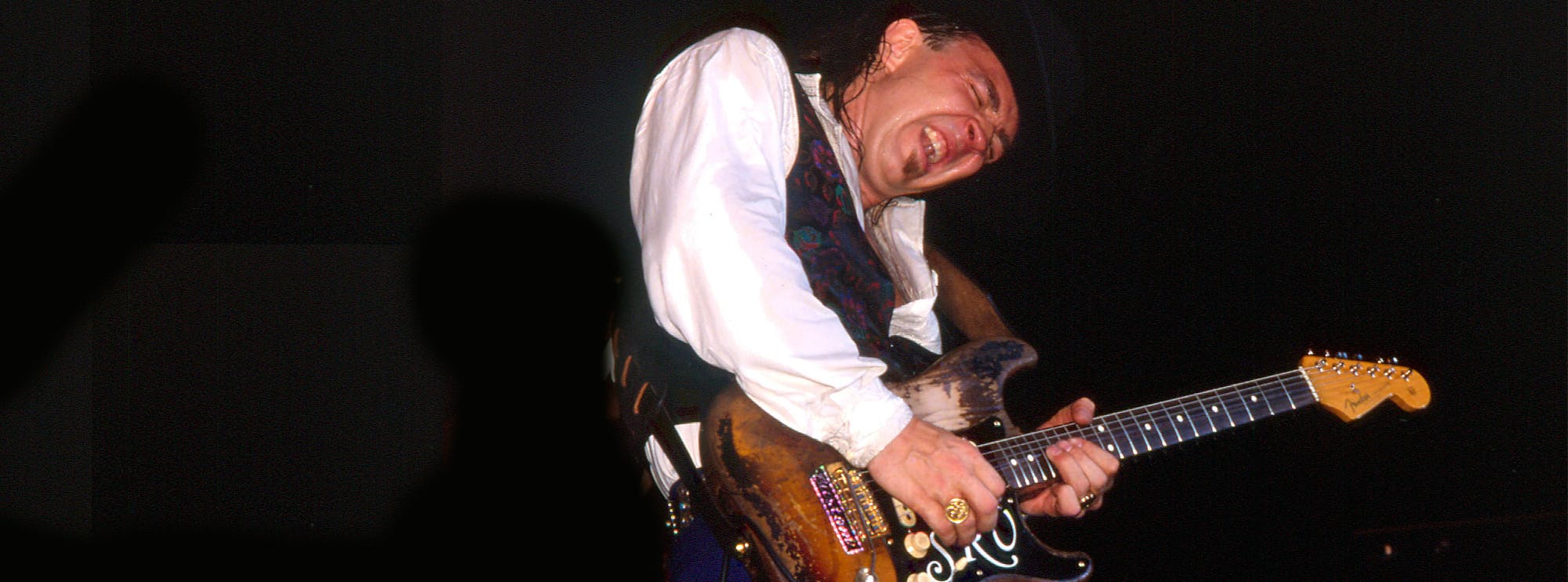Marooned by David Gilmour: A Guitarist's Perspective
If there's one song that encapsulates the sheer brilliance and emotive depth of David Gilmour's guitar playing, it's undoubtedly "Marooned." Released on Pink Floyd's album "The Division Bell" in 1994, this instrumental masterpiece stands as a testament to Gilmour's mastery of tone, expression, and phrasing. Let's delve into the intricacies of this composition, exploring the chords, scales, solo, and Gilmour's unique approach to the guitar; then watch the note for note video tutorial by Lick Library legend, Jamie Humphries.
Chords and Scales Used
"Marooned" primarily revolves around ambient, atmospheric chord progressions that create a haunting backdrop for Gilmour's soaring lead lines. The main chord progression features lush, open chords such as:
- Am
- G
- Dm
- Fmaj7
These chords, embellished with subtle nuances and variations, establish a dreamy sonic landscape that forms the foundation of the song. Gilmour's melodic improvisations predominantly draw from the A natural minor scale (Aeolian mode), infusing the music with a melancholic yet enchanting vibe.
Guitar Solo Analysis
At the heart of "Marooned" lies David Gilmour's mesmerising guitar solo—an ethereal journey through sound and emotion. Let's break down some key elements of this iconic solo:
- Melodic Phrasing: Gilmour's solo is characterised by fluid, emotive phrasing, showcasing his innate ability to weave captivating melodies. Each note is imbued with expression, as Gilmour effortlessly navigates the fretboard, painting a vivid sonic tapestry.
- Tone and Dynamics: Gilmour's signature tone, characterised by smooth, sustained notes and rich overtones, is on full display here. He masterfully controls dynamics, seamlessly transitioning from delicate whispers to soaring crescendos, evoking a range of emotions with every bend and vibrato.
- Use of Space: One of the most remarkable aspects of Gilmour's solo is his judicious use of space. He allows notes to breathe, punctuating the music with moments of silence that enhance the overall impact of his phrases, creating a sense of tension and release.
- Expressive Techniques: Throughout the solo, Gilmour employs a variety of expressive techniques to convey emotion and add depth to his playing. From soulful bends and delicate vibrato to tasteful slides and subtle trills, every gesture is executed with precision and finesse.
David Gilmour's Playing Style
David Gilmour's role as the lead guitarist in "Marooned" exemplifies his unparalleled skill and musical vision. Known for his emotive playing style and impeccable technique, Gilmour approaches the guitar with a blend of soulfulness and technical prowess that sets him apart as one of the greatest guitarists of all time.
In "Marooned," Gilmour demonstrates his mastery of tone, utilising a combination of effects such as delay, reverb, and compression to sculpt his signature sound. His nuanced use of dynamics and expression allows him to convey a wide range of emotions, from introspective introspection to soaring euphoria.
Gilmour's improvisational prowess shines through in his solo, as he effortlessly navigates the harmonic landscape of the song, exploring melodic motifs and building tension with each successive phrase. His innate sense of musicality and phrasing elevates the solo to new heights, captivating listeners and drawing them into the sonic journey.
Guitar Techniques Used
- Vibrato
- Alternate Picking
- Bends (Double Stop and Unison Bends)
- Slides
- Legato
- Pull-offs
- Hammer-ons
- Tremolo Picking
- Trills
- Dive Bombs
- Harmonics
- String Bending
From the haunting chord progressions to the transcendent guitar solo, "Marooned" stands as a testament to David Gilmour's unparalleled talent and musical vision. Through his expressive playing and emotive storytelling, Gilmour transports listeners to a realm of pure sonic bliss, leaving an indelible mark on the landscape of rock music.
About The Tutor
Tutor Profile
Jamie Humphries
Jamie is one of the mainstays of LickLibrary, having a stream of hugely successful best selling DVDs, Jamie is best known as Brian May's sideman who he's played shows with all over the world. Aside from this Jamie is a hugely popular clinician working all over the world with Ernie...



